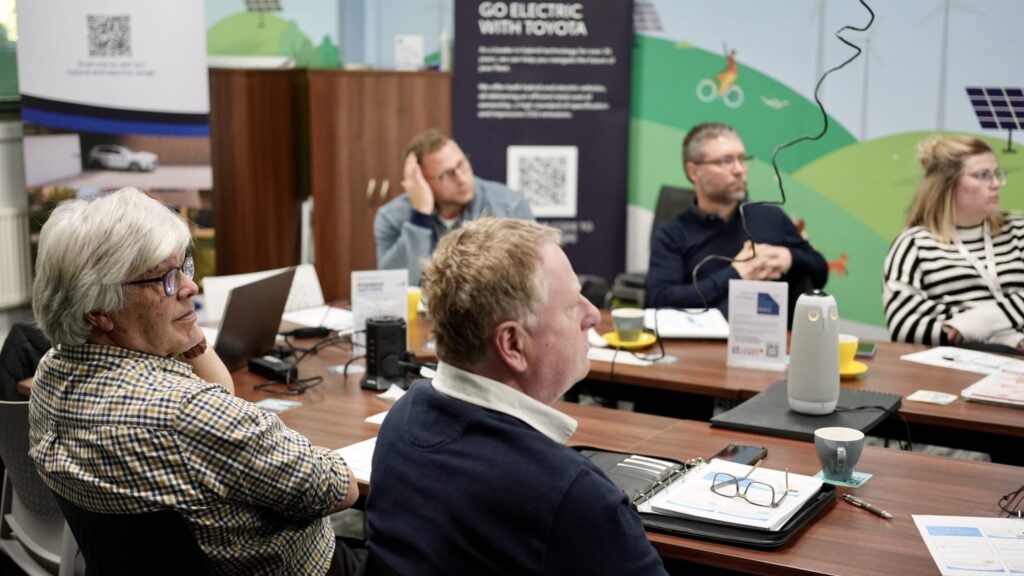
To meet the UK Government’s net zero target by 2050, it’s clear that widespread change is coming. Businesses will need to innovate to reduce their emissions. But consumers will also need to demand more from the products and services purchased. Companies using a customer-focused approach to green innovation can lead the way.
Customer-focused innovation goes further than simply asking and delivering what customers want.
Teams routinely gathering and analysing customer feedback can identify new opportunities for innovation. Especially when considering the data against:
We know that the last 50 years has seen huge technological developments. This may fool us into believing that innovation is about technology. But really, innovation is human. Technology is simply an enabler of change and catalyst for differing human behaviours.
So, when looking at new innovations as part of a net zero strategy, it makes sense to include the human element. Asking the right questions can help you solve customer’s problems.
The customer experience is also central to customer-focused innovation. It demands a deep-rooted desire within the organisation to improve the customer journey. In doing so, interactions can be more impactful, helping to develop brand loyalty.
Gathering feedback from customers themselves is important. But also check in with customer-facing teams who work to resolve issues every day.
As the world around us constantly evolves, companies not innovating will lose ground. Especially if their competitors are innovating.
It’s key to recognise the changes taking place in your industry. This includes understanding your customers’ needs as they unfold. Being willing to listen, respond and innovate for them can pay dividends.
It can disrupt the status quo, allowing you to claim market share. Sometimes even away from the big players.
You’ll need to have a continual awareness of where customers and markets are heading. That way, you can innovate for both existing and future needs.
Customer experience is crucial. If you’re not offering a great service and personalisation, they’re likely to go elsewhere.
To develop an organisational environment which focuses on the customer:
Know what they’re talking about, what problems they’re trying to solve and what options are available. Find out what your customers need, not what you think they want.
Deliver great customer service and ask for practical feedback to help your strategy.
Focus on solving customer problems and be adaptable. It may mean changing your thinking.
Build in customer interaction and partnership at the core of the organisation. This applies to both the internal and external customer.
When working towards net zero, companies will need to baseline their current emissions. Emissions, as defined by the Greenhouse Gas Protocol, fall into three categories.
Scope 1 – direct emissions such as heating, lighting, manufacturing, and company vehicles.
Scope 2 – indirect emissions associated with purchased electricity, steam, or heat.
Scope 3 – indirect emissions, including your customer’s emissions:
If the public sector is one of your customers, you may also be aware of the Carbon Reduction Plan. This forms part of tender submissions and details your organisational carbon footprint. It also confirms your commitment to achieving net zero by 2050.
In other words, your green credentials are already important. Customers want to talk with you about green innovation.
The Net Zero Accelerator at The Business Village provides free support for businesses working on net zero. One recent workshop was on customer-led green innovation.
“Interesting information shared on innovation and application in the workplace” – Kate, Bartec Municipal Technologies
Facilitated by Steve Young, Development Director at Winning Pitch, the workshop covered:
Many organisations use an ideas-first approach to innovation. But this misses a key step in understanding customer needs. It’s almost a guessing game. A needs-first approach means you understand what the customer wants and why they buy from you.
Talking about the benefits of a product or service is a commonly used sales technique. It goes beyond the product or service itself and focuses on how it’s used. For example:
Using this approach can help drill down into your customer needs. When you add this to a map of the customer journey, you can begin gathering meaningful data. Ask customers for the following satisfaction levels at each stage of the journey:
This will provide a starting point to create performance metrics. And these can inform innovation. The emissions satisfaction element will feed into your green innovation strategy.
Asking customers for their feedback will create a customer-focused approach to green innovation. It can uncover new opportunities which you hadn’t considered. And it can help you stay ahead of the competition in an evolving marketplace.
Seeing customers as partners when developing your innovation strategies can build brand loyalty. But it demands flexible thinking.
Sharing your green credentials will be important as the UK moves towards Net Zero 2050. Customers will need to include your emissions in their own net zero figures. So, stay ahead of the competition by adopting customer-focused green innovation.
Develop your green innovation strategy with help from the Net Zero Accelerator at The Business Village.
Email: ksteel@barnsleyBIC.co.uk
Website: visit #NetZeroBarnsley
Feedback on the Customer-led green innovation process workshop includes:
“Truly enjoyed the interactive aspects” – Matt, CSP Systems
“Enjoyed applying real-life scenarios to our business” – Lynne, Totally Runnable Ltd
“Great terminology and approach to customer mapping” – Tom, Webmart
“Excellent and thought-provoking” – Ivan, Qualter Hall
How sharing your net zero strategy can boost your marketing
How to get started on your net zero journey
Funding for the Net Zero Accelerator at The Business Village comes from the UK Government through the UK Community Renewal Fund, South Yorkshire Mayoral Combined Authority and Barnsley Metropolitan Council.